|
|
|
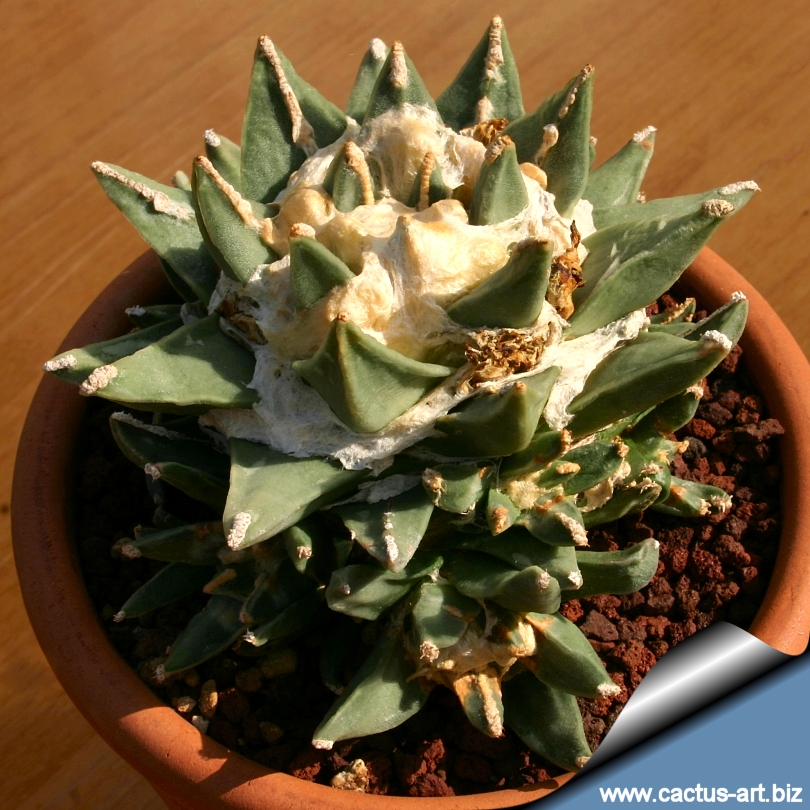
Ariocarpus retusus "pectinata"
|
|
Description: This plant differs from the
standard Ariocarpus retusus, for its short pectinated spines already
present in young specimens. The spines persist with the age, but in
adult plant they are partially covered by fur.
Stem: Dull green , flattened, globose, rounded on top, 3-12cm
high, 10-15cm in diameter.
Tubercles: Leaflike divergent, erect, basally compressed, becoming
attenuate at the apices, convex or nearly flattened
adaxially, 1.5-3cm long, 1-3cm broad, usually nearly as broad as
long (or sometime longer than broad)
Spines: 1,2 to 2,0 mm long, dull.
Areoles: At the tips and extending on the upper side of the
tubercles, elongated from 2,5 to 20,0 mm long, wooly.
Flowers: Diurnal 4-5cm in diameter., 2-4 2cm long; white to pink
Flowering time: October
Fruit: white, green, or rarely pinkish, 10-25mm long, 3-10mm in
diameter |
|
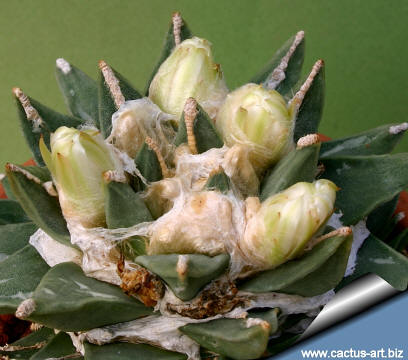 |
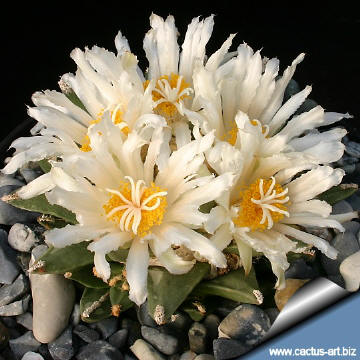 |
|
. |
|
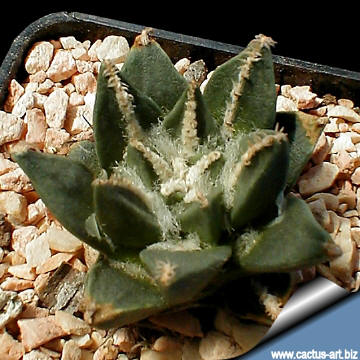 |
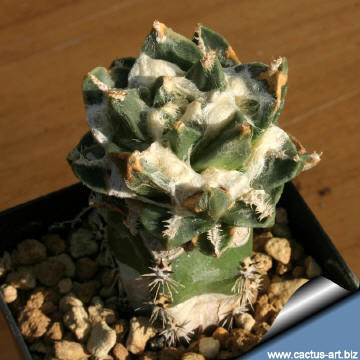 |
|
Cultivation: This species is slow growing but
certainly not as slow as some other types of cacti, it is of easy
culture in a well drained non-organic free draining soil compost, with
ample water during the growing season. Use of a weak low-nitrogen
fertilizer during the growing season can encourage growth. The main
threat to their development is root rot. Ariocarpus should be kept dry
whenever there is a threat of cold. The appearance of Ariocarpus can
benefit greatly by watering the plants from the bottom. This practice
will help to keep the “wool” on the top of the plant from becoming
matted or discoloured. Need light shade to full sun. Frost Tolerance:
Hardy to -10° C
Propagation: Ariocarpus retusus is probably the easiest species of
the genus to raise from seed, but will generally take about 6-10 years
to reach flowering size, this rare form is frequently grafted to speed
the growth rate.
|
|


Advertising
|
|
|
|
|
Family:
Cactaceae (Cactus
Family) Scientific name: Ariocarpus retusus subsp.
Pectinatus Weisbarth Subspec. nov. (nomina nuda)
Manfred Weisbarth a new subtype of Ariocarpus (Cactaceae),
Nov. 2003, 11, 289-292.
Holotype: Mexico, San Louis potosi, To Huizache (?), A. Lau s.n.
of 1971 cultivated specimen, Weisbarth (ULM 17099).
Conservation status: Listed in
CITES Appendix I
Synonyms:
- Ariocarpus retusus var pectinatus
|
|

This odd plant has long
adiaxal areoles that stretch out to a greater or the full length of
the tubercle and uncommon short pectinated spines .
|
|
|
|
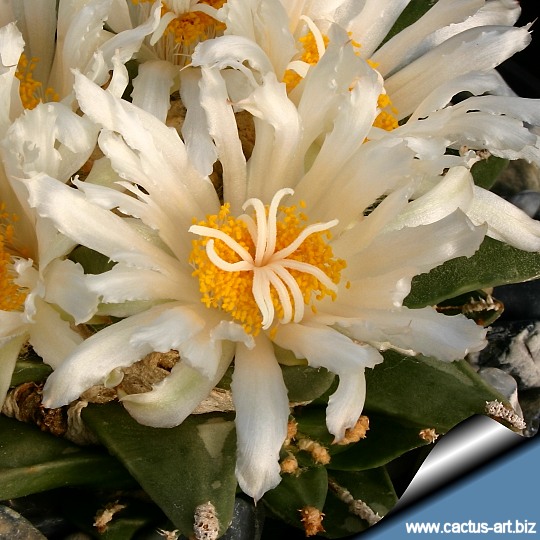
Ariocarpus retusus is an extremely
variable species,. Tubercle size and shape vary widely, a terminal
areole is sometimes present at the tip. The vast amount of phenotypic
variation in the species has led to the erection of several variants:
- A. retusus ssp. retusus: widespread, flowers are cream or
white, occasionally with reddish midveins.
- A. retusus ssp. trigonus: somewhat less widespread
with long sharp tubercles twice as long as wide. The flowers are
yellow (usually), white to pinkish white.
- A. retusus v. furfuraceus: applied to plants with
equilaterally triangular shaped tubercles
- A. retusus ‘furfuraceus’ var. rostratus refers to
plants with a more tapered apex to the tubercle.
- A. retusus v. scapharostroides plants from the Villa
Juarez region of SLP, it is characterized by erect angular tubercles,
superficially reminiscent of A. scapharostrus.
- A. retusus confusus nomina nuda
- A. retusus subsp. jarmilae nomina nuda
- A. retusus subsp. horaceki nomina nuda
- A. retusus var. pectinatus nomina nuda
- A. retusus subsp. panarottoi nomina nuda
- A retusus var. minimus is a nomina nuda which has
recently been applied to plants from Echido Nuncio,in San Luis Potosi.
- A. retusus f. major applied to selected cultivated
plants with very broad shaped tubercles (“Tama-botan” in
Japan).
|
|
Photo of
conspecific taxa, varieties, forms and cultivars of Ariocarpus
retusus.
|
|